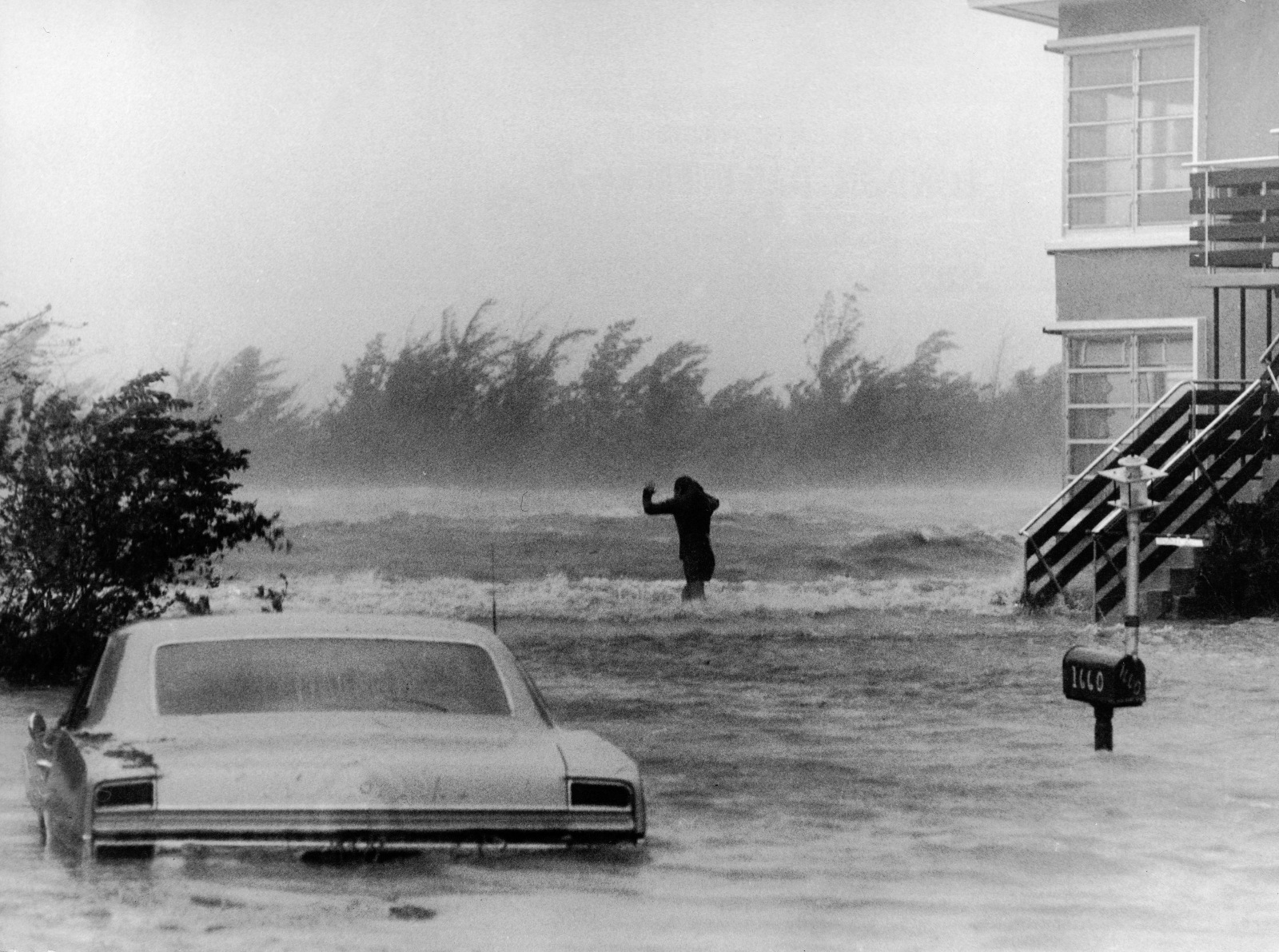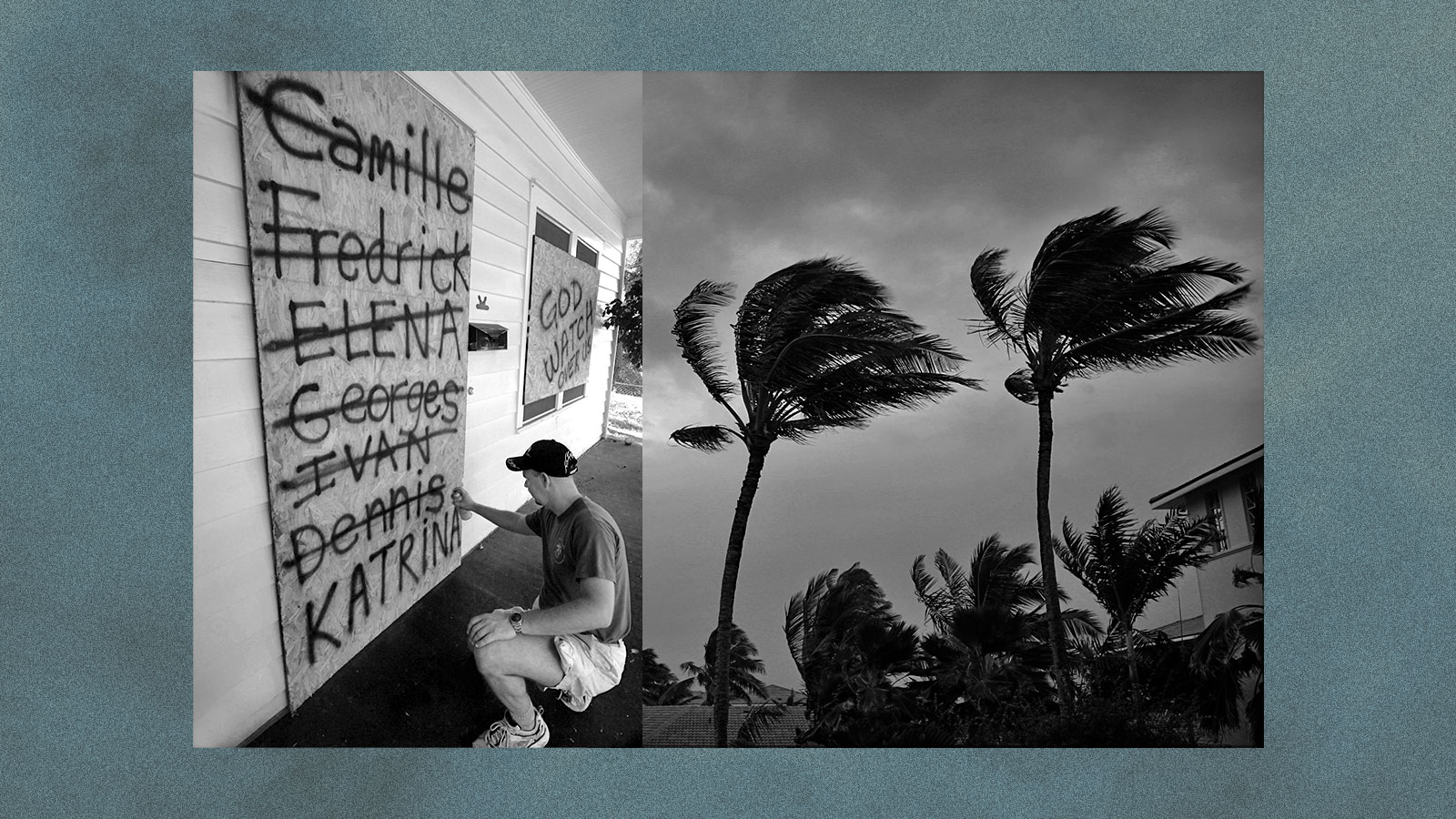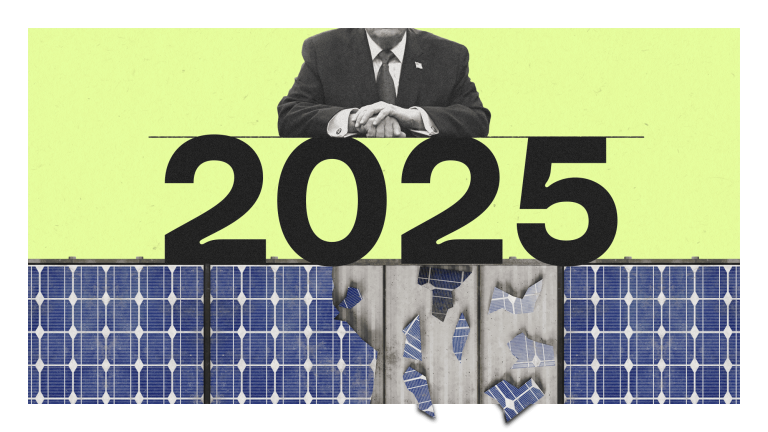Every year ahead of hurricane season’s official start in June, the National Oceanic and Atmospheric Administration releases the forecast for the Atlantic Ocean’s tempestuous season ahead. In a predictable cycle, articles start swirling in to answer familiar queries: What will these hurricanes be called? Who picks their names? Why do hurricanes get named like people, anyway? This year, the first will be named Alberto, then Beryl, Chris, Debby, and so on all the way to William, the end of the alphabet in terms of desirable letters meteorologists trust they can wrest intelligible names out of.
It’s likely that a few of these monikers will get retired, an honor bestowed upon particularly deadly, destructive storms whose reuse “on a different storm would be inappropriate for obvious reasons of sensitivity,” according to NOAA. This year’s season is predicted to be the busiest on record because of record-hot waters in the Atlantic, which can stir up stronger hurricanes, and the predicted shift from an El Niño climate pattern to a La Niña one whose weaker high-altitude winds make it easier for hurricanes to form. NOAA recently projected that 17 to 25 named storms will appear this year, with four to seven reaching the status of major hurricanes, Category 3 or higher.
The official naming of hurricanes dates back to 1953, when the U.S. Weather Bureau started labeling tropical storms to get the public’s attention, reduce confusion between storms, and indicate a level of severity. (Storms don’t make the cut unless their winds reach 39 miles per hour.) The personality of hurricane names makes them memorable, but the practice comes with weird side effects, since names are loaded with cultural baggage that can affect how people talk about, or even prepare for, a storm barreling toward them. “Naming plays a huge impact in both how we view and respond to hazards,” said Liz Skilton, a historian at the University of Louisiana at Lafayette and the author of the book Tempest: Hurricane Naming and American Culture.
It works the other way around, too, with particularly bad hurricanes swaying what people name their babies. It’s well-documented that catastrophic storms resulted in fewer babies named Betsy (1965) and Harvey (2017), since most parents flinched at giving their kid a name associated with a catastrophe. Some even plan ahead: “Is it a bad idea to use an upcoming hurricane name?” one prospective parent asked on Reddit a couple years ago, worried the baby name they loved would be sullied. (The same names are rotated through every six years until they get retired by association with a terrible storm.) While the consensus on Reddit was that they were overthinking it, the hurricane association can cause problems for people with unique names. After Hurricane Katrina killed around 1,400 people in Louisiana and Mississippi in 2005, one trauma recovery psychologist who worked with survivors went by her initials, K.H., because introducing herself with her real name, Katrina, resulted in “a visceral reaction.”

Oddly enough, research suggests that baby names that sound similar to a much-talked hurricane tend to spike in its aftermath. One analysis found that names that began with A became 7 percent more common after Hurricane Andrew caused billions of dollars of damage in 1992, and those that started with K rose 9 percent after Hurricane Katrina. The researchers chalked it up to the influence of hearing those names so frequently, which altered what kind of names sounded good to people.
Before hurricanes got human names, they were christened haphazardly, often depending on when or where they struck, like the Great Miami Hurricane of 1926. The practice of naming hurricanes after women started with Clement Lindley Wragge, an Australian weather forecaster, in 1896. Wragge’s idea went on to inspire George R. Stewart’s hit novel in 1941, Storm, starring a meteorologist who secretly named hurricanes after girls he knew. The notion gradually caught on, and the Weather Bureau decided to test it out nationwide.
The devastating storms of the 1954 season, Carol, Edna, and Hazel, became known as “the Bad Girls of ’54.” Reporters clamored at the chance to write about storms as dramatic feminine characters, depicting them as howling, shrieking, and playing coy. “Hurricanes were not just female — they were exemplars of the worst kind of womanhood imaginable,” Skilton wrote in Tempest. There was pushback from the start, and it only intensified in the 1970s, with Roxcy Bolton leading the feminist charge. “I’m sick of reading headlines such as ‘[Hurricane] Camille Was No Lady,’” she told the press.
Skilton, who researched the language used to talk about hurricanes in thousands of newspaper articles over the decades, found that when storms struck, local reporters used the most gender-specific language. For example, when Hurricane Diane made landfall in North Carolina in 1955, 18 percent of articles in the surrounding states referred to the storm as a woman, either using she/her pronouns or nouns like “lady,” twice as often as articles in the rest of the country. Similarly, when Hurricane Camille barreled into Mississippi in 1969, articles in Gulf Coast states were more than three times as likely as other areas to specify the storm’s gender. Naming a storm imbues it with imagined, humanlike qualities, providing a target for people to express their anger “toward this natural object that has caused so much damage or destruction” where they live, Skilton said.

In 1979, a new system alternated between men and women’s names, at the order of President Jimmy Carter’s Secretary of Commerce, Juanita Kreps. At the same time, control of the naming convention was handed to the World Meteorological Organization, which still maintains the list. The Atlantic storms started rotating between English, French, and Spanish names, reflecting the blend of ancestry in the hurricane-prone Gulf Coast. It’s common practice around the world to give storms names that reflect the ethnicities in the regions they affect, said Brian McNoldy, a hurricane researcher at the University of Miami.
With names like Allen and Frederic thrown into the mix, hurricanes seemed to pick up more aggressive, even warlike personalities. Hurricane David, the first big storm in 1979, a period in which serial killers cast a shadow over the national mood, was called a “killer” that “ripped” and “razed” the coastline, diabolical and determined in “his” attack. These kinds of associations with names and gender can have real-world effects: A study in 2014 found that survey respondents perceived female-named storms as less deadly than their male counterparts, and, therefore, less worthy of evacuation. That correlation was reflected in historical death tolls, the authors found, with storms named after women causing more damage. The study received criticism, with some scholars raising questions about the methods, but Skilton said the research should lead people “to question whether the storm names are influencing us in a harmful way.”
As the climate changes, amping up hurricanes, floods, and heat waves, people are urging government agencies to give names to other kinds of severe weather, from “Winter Storm Archer” to “Heat Wave Zoe.” It’s opening up a new avenue in disaster communication — and, if history repeats itself, new complications.




